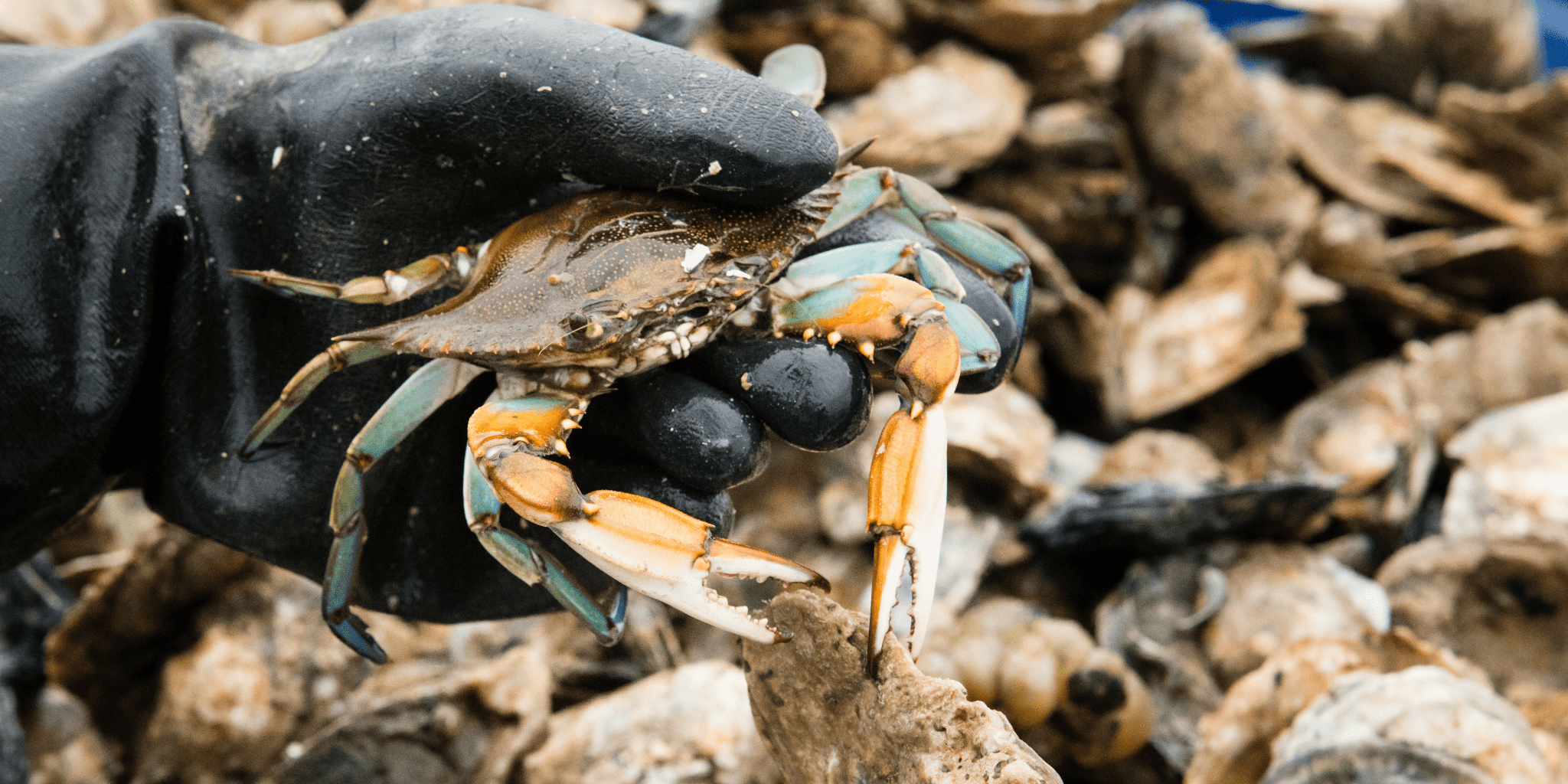We have much more to do and your continued support is needed now more than ever.
Chesapeake Bay Blue Crab Population Reaches New Heights

To say that blue crabs are iconic in the Chesapeake Bay region would be a severe understatement. From restaurant signs to bumper stickers, you can pretty much find blue crabs everywhere, as it has become a symbol for the Chesapeake. This should not come as a surprise, since the blue crab has always been an essential part of the Bay’s ecosystem and local economy. However, while the blue crab holds a special place in our hearts, this love has not always translated into protection of this critical species.
As the recent National Wildlife Federation Magazine article Blues in the Bay points out, the population of blue crabs reached a seven-year high this year, with more than 594 million blue crabs calling the bay home. However, the picture has not always been so rosy for this crustacean. In the late 1990s, the blue crab population bottomed out, with record lows that continued into the early 2000s. Part of this shift was due to overharvesting and increased pollution reaching our waterways. Since then, the conservation community has worked together to restore crab populations through harvest management, improved habitat, and green infrastructure, which has resulted in better population numbers as of late.
Another reason that the news about the crab population was great was because some had forecasted a lower population after the very wet summer that the region experienced last year. In 2018, the greater D.C. Metro area saw the largest levels of rainfall ever recorded, with Washington, D.C. recording more than 66 inches of rainfall, 26 inches above average. Large rain events in the Chesapeake can hurt crab and other species, like oyster and fish, because of the influx of freshwater and pollution it brings. Freshwater can negatively affect oysters that need brackish water to reproduce, and pollution carried into rivers and streams through rainfall can affect the health and abundance of habitat.
Many clean water champions see the resiliency of the blue crab population as a sign of great progress for the Chesapeake Bay and its thousands of rivers and streams. This is especially true of the National Wildlife Federation hosted Choose Clean Water Coalition, who for the past 10 years has organized and coordinated the work of more than 240 nonprofit organizations across the Chesapeake Bay watershed. Since its inception, the Coalition has worked with its members to secure funding and pass legislation that helps to install projects on the ground in local communities. This includes projects like tree plantings, building oyster reefs, and installing rain gardens, that filter our water, reduce pollution and provide habitat for wildlife.
The seven jurisdictions in the Chesapeake Bay watershed, which include Maryland, Pennsylvania, Virginia, New York, Delaware, West Virginia, and the District of Columbia, have all committed to working together to improve their waterways, to the benefit of their local residents and the broader Chesapeake Bay watershed. However, all the jurisdictions have a unique set of issues and barriers to overcome, which can make the process difficult and complicated. Just recently, the jurisdictions released their final plans for how they propose to meet their clean water goals. As you can imagine, some outlined better plans than others did and for the Coalition and our members, it is our role to ensure that all the plans meet the goals and commitments made for clean water. That is the only way that we will continue to see record numbers of our iconic blue crab in the Chesapeake Bay.





















